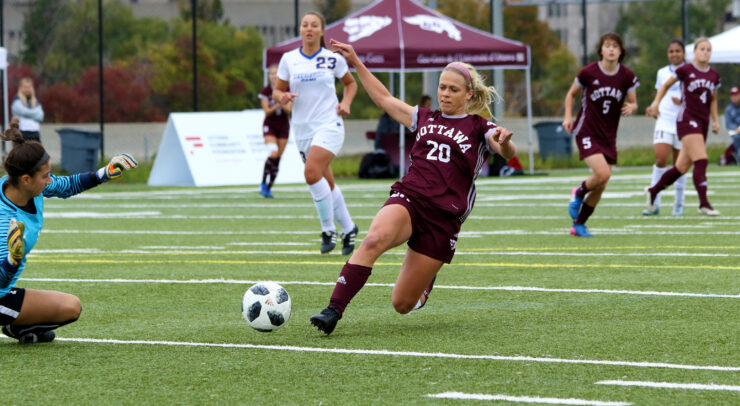The problem
CHEMICAL REACTIONS OCCUR all around us. The interaction of molecules form the basis of all life. Molecules in the air work together constantly, changing the atmosphere. These seemingly microscopic changes affect the world in huge ways. Scientists want to observe the structure of molecules and how they change during the reactions. Unfortunately, the reactions happen so quickly they’re nearly impossible to follow. So, how do we watch carbon dioxide or ozone react in the atmosphere?
Recently, ultra-fast lasers have provided an answer to this question. Two high-speed laser pulses are used: One to trigger reactions and one to probe the molecules. By controlling the time between them, a reaction can be mapped out.
Still, instigating a reaction is no small feat, and ultra-fast lasers only come in a handful of wavelengths, which are critical to starting a reaction.
The researcher
Peter Wright is a PhD student at the Coherent Anti-Stokes Raman Scattering Laboratory, better known as CARSLab. He works alongside U of O professor Albert Stolow on these “pump-probe” experiments, taking chemical reaction mapping to higher levels and new extremes.
The project
A novel laser system is the key to Wright’s work, boasting both shorter pulses and a shorter wavelength. The advantages of this system are twofold. The new wavelength allows for the study of simple atmospheric molecules like nitric oxide and carbon dioxide. Additionally, as Wright explains, “If you have a shorter pulse, you can get better time resolution.” The system is also designed to be portable, allowing it to be used in multiple experiments.
The key
The trick is knowing if the system is working. Checking whether the pulse is short enough to map out the incredibly fast chemical reaction isn’t possible when it’s faster than a computer. Instead, Wright splits the pulse into parts using a two-photon process and getting a mapping that tells him how long the pulse is. With an ultra-fast, short wavelength source, new molecules, techniques, and reactions are open for examination.
Are you doing interesting science? Or do you have a professor who can’t stop talking about his research? Let us know at research@thefulcrum.ca




